|
Three-time world champion Ayrton Senna was one of those who had been vocal about the need to ban driver aids, but the great Brazilian would sadly be killed in an accident during the third race of the new era at Imola. "The cars are very fast and difficult to drive,” Senna had said prophetically after testing his now gizmo-free car during pre-season testing. “It's going to be a season with lots of accidents and I'll risk saying we'll be lucky if something really serious doesn't happen..." Senna’s tragic passing (and the death of Roland Ratzenberger, killed that same Imola weekend) ushered in a number of sweeping changes to car design to reduce performance and improve safety. |
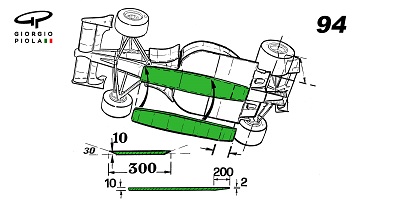 |
|
This plank, which remains in place to this day, prevented teams from running ultra-low ride heights because only 1mm of wear was permitted at the end of each race. Benetton famously fell foul of this rule at the Belgian round when post-race checks on Michael Schumacher’s car showed excess wear. This had been caused, the German’s team argued, by a mid-race spin over a kerb, but their appeal was rejected and chief title rival Damon Hill was awarded the win.
| 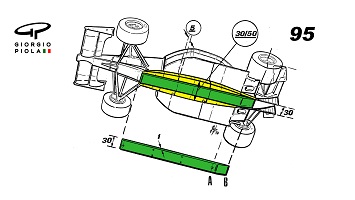 |
|
From the Japanese Grand Prix teams were allowed to put 10 titanium skid blocks on the floors of their cars to protect the plank, but a much more significant change to chassis undersides was on the way for 1995 - the stepped flat bottom (pictured above). The introduction of the step saw either side of the central section of floor raised by 25mm - a move which was estimated to reduce the amount of downforce generated by the car’s underside by as much as 50 percent. |
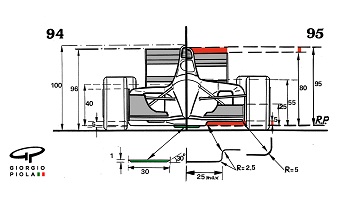 |
|
Further aerodynamic reductions for ‘95 (pictured above) were made by reducing the height of the rear wing (by 100mm) and reducing front wing endplate height (to between 5cm and 25cm above the flat bottom) and length (must not extend further back than 35cm in front of the front wheel axis). A reduction in engine capacity from 3.5 to 3.0 litres slowed cars further. |
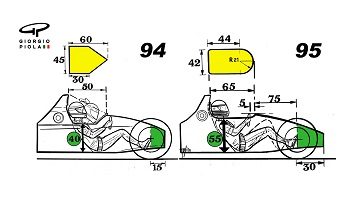 |
|
Meanwhile, on the safety side there were some of the biggest steps forward ever seen from one season to the next. The cockpit opening was increased in length to limit the possibility of forward impacts with bodywork, while the width was narrowed slightly and the cockpit sides raised to cover the drivers’ shoulders. The chassis was also required to extend 300mm (rather than 150mm) in front of the drivers’ feet and be able to withstand more force (the frontal impact test speed increased from 11 to 12m/s , while the load in the nose push-off test increased by 33 percent). A survival cell side impact test was also introduced. The changes resulted in a car that looked markedly different from its predecessor - especially in terms of the 'amount' of driver visible in the cockpit (see picture below).
| 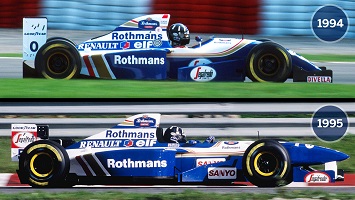 |
Sim-Race-Modeling
Crash King  1995 CK F1 Season 25.06.2007 1995 CK F1 Season 25.06.2007  [136 Mb] [136 Mb]
CTDP  CTDP F1 1995 статья CTDP F1 1995 статья
 (CTDP F1 1995) [186 Mb] (CTDP F1 1995) [186 Mb]
(converter) [0.2 Mb]
Dalanar  F1 1995 by Dalanar F1 1995 by Dalanar
 (F1 1995 Dalanar) [130 Mb] (F1 1995 Dalanar) [130 Mb]
|
|